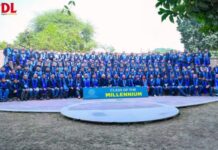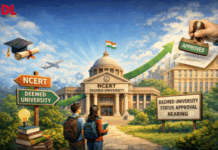Govt can use social media as a potential goldmine for to-and-fro exchange of citizen views on public and policy matters
 Asocial network signifies the relationships and affiliations among individuals, especially relating to their families, works, interests or hobbies. The evolution of Web-enabled social media has broadened its horizon, and the network now also includes fans and followers of celebrities, institutions, leaders and politicians. Social media started with users opening up accounts primarily for reaching out to friends and families and sharing with them ideas, images and videos. n fact, the popular social networking site Facebook was started in 2004 by Mark Zuckerberg, then a Harvard student, for rating students in terms of how handsome or beautiful they were. Social networking has got phenomenal acceptance among people across continents. Facebook, now, has more than 500 million users across the globe. After getting started in July 2006, Twitter has more than 190 million users in 2010. While being used for networking by teens and college goers, social media has emerged as a strong platform for branding and marketing for businesses. It is also being capitalised by government bodies and institutions, investigative and counter terrorism agencies, healthcare organisations, scientific and research and development communities, and political leaderships. Social media has provided a significant platform for businesses to connect with their stakeholders, channel partners, suppliers, and customers. A McKinsey report notes that advocacy leads to better sales. Given the way di cussions are done through postings on walls, comments and live chats, social media has offered a powerful branding tool in the hands of businesses. Gradually, search engine optimisation is being aken over by social media optimisation. For small businesses and start ups, social media is a reaso able mode of marketing and branding. Heads of states are using it
Asocial network signifies the relationships and affiliations among individuals, especially relating to their families, works, interests or hobbies. The evolution of Web-enabled social media has broadened its horizon, and the network now also includes fans and followers of celebrities, institutions, leaders and politicians. Social media started with users opening up accounts primarily for reaching out to friends and families and sharing with them ideas, images and videos. n fact, the popular social networking site Facebook was started in 2004 by Mark Zuckerberg, then a Harvard student, for rating students in terms of how handsome or beautiful they were. Social networking has got phenomenal acceptance among people across continents. Facebook, now, has more than 500 million users across the globe. After getting started in July 2006, Twitter has more than 190 million users in 2010. While being used for networking by teens and college goers, social media has emerged as a strong platform for branding and marketing for businesses. It is also being capitalised by government bodies and institutions, investigative and counter terrorism agencies, healthcare organisations, scientific and research and development communities, and political leaderships. Social media has provided a significant platform for businesses to connect with their stakeholders, channel partners, suppliers, and customers. A McKinsey report notes that advocacy leads to better sales. Given the way di cussions are done through postings on walls, comments and live chats, social media has offered a powerful branding tool in the hands of businesses. Gradually, search engine optimisation is being aken over by social media optimisation. For small businesses and start ups, social media is a reaso able mode of marketing and branding. Heads of states are using it
Governments in the West visualise social media as an opportunity for strengthening the state and citizen interface, getting citizens’ feedback nd crowdsourcing inputs on policy matters
and practical issues in public life. Many heads of states have social media accounts, wherein they provide regular updates about their current engagement and future plans. In the 2008 US Presidential Election, Barack Obama had a 100-people team working on social media campaigns. Obama’s followers outnumbered those of the Democratic candidate Hillary Clinton and the Republican contestant John MacCann. The 2010 general election in UK also saw politicians having presence on social networks like Twitter, Facebook and YouTube. In Latin America, Chile’s president Sebastián Piñera is on Twitter, and his is one of the most followed Twitter accounts in the country. He has even asked all his cabinet members to start tweeting. Hugo Chávez, President of Venezuala is also active on Twitter. Reaching out to citizens In a broader perspective, use of social network by governments is seen as step towards n open governance culture. Open government refers to an accountable and transparent form of government, which accepts public scrutiny and which keeps citizens at the focus of its policies and actions. eaching out to citizens and getting their feedback has been an uphill task for governments around the world. Interestingly, there has been novel usage of ocial networking sites by government agencies in some countries. Courts in Australia and New Zealand have used the popular social networking site Facebook for posting summons. Given that a sizable part of the Indian population is on social networking sites—more than 26.2 million Indians have Facebook accounts while around 3.02 million are on Twitter—socialmedia is being seen as a channel of communication between the government and citizens. The departments leading in their social media efforts for effective interface with citizens include Public Diplomacy Division at Ministry of External Affairs and Traffic Police in cities like New Delhi, Gurgaon, Chennai and Mumbai. The ease of accessibility through social
media raises the hope for a more responsive and citizen-centric governance. An example is the unprecedented response from citizens on the Facebook page of Delhi Traffic police. A citizen watch area Even though Delhi Traffic Police (DTP) neither intended nor asked citizens to upload images of people violating traffic laws on the road, thecitizens started uploading such images on the DTP Facebook page and requested for legal actions. Slowly, the practice caught up so much that within six months, DTP had more than 39,000 followers on Facebook.
On the Facebook initiative, Satyendra Garg, Joint Commissioner of Police, Delhi Traffic Police sys, “The idea of getting on Facebook had come om Special Commissioner of Police, Delhi Traffic Police. In May 2010 we opened a page on thepopular social networking site, Facebook. Seeing the great potential of interacting with myriad number of people [the road users] on such web enabled social platform, I started taking note of all the things happeing on our Facebook page, with the help of a small team comprising an inspector level officer and some constables. Initially, the thought was to inform and educate our followers on the traffic rules, and the norms and behaviour expected of road users. But the response from acebook users was phenomenal. People on their own started uploading images. We took it as a very positive development and have been trying to live up to citizens’ expectations.” Following Delhi, residents in Gurgaon started ringing up the Gurgaon traffic police, asking if they had a Facebook page. As a result of repeated queries, the Gurgaon traffic officials decided to have one. The residents have reciprocated well nough and within a month, the city traffic police have got a good number of followers.
























